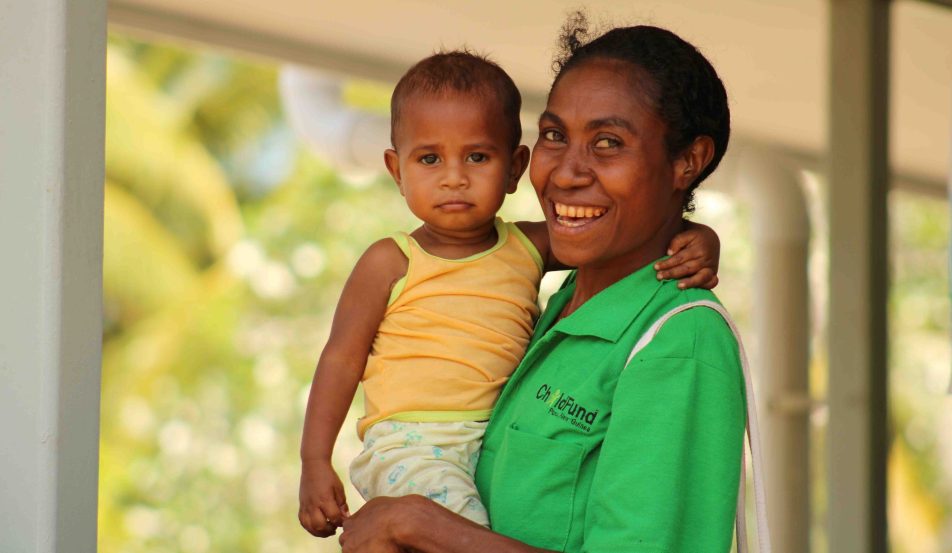What are some common infectious diseases?
In Australia, most infectious diseases we encounter can be unpleasant but usually are not life-threatening. However, for vulnerable children living around the world, infectious diseases such as seasonal flu, diarrhoea and tuberculosis can be fatal.
We’ve outlined seven of the world’s most common infectious diseases, and examined methods to prevent and treat them.
Influenza
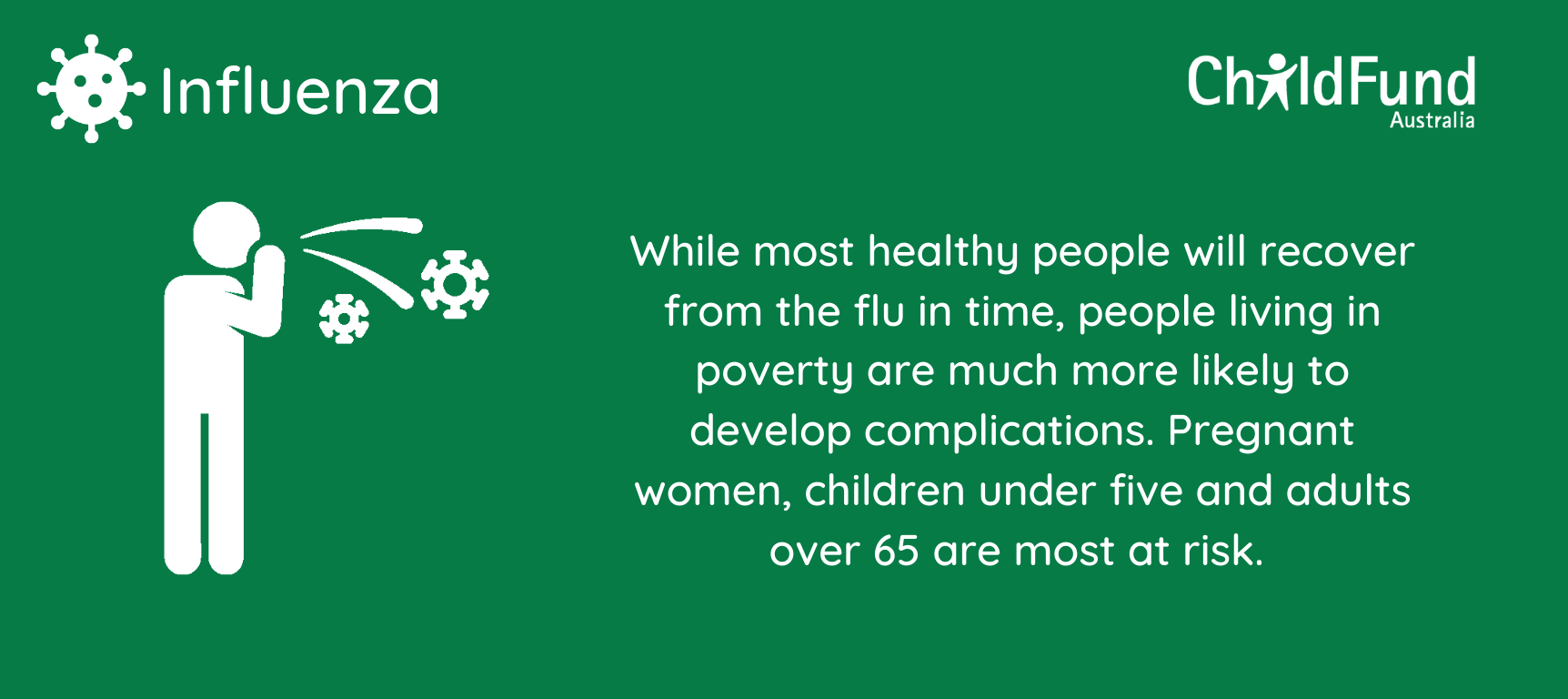
Influenza, or ‘the flu’ as it’s most commonly known, is a viral infection that targets your respiratory system. In healthy people, the flu usually resolves itself, however young children under five, adults over 65, pregnant women, people living with chronic illnesses, and people who are overweight are at a much greater risk of developing complications.
Symptoms of influenza
The initial symptoms of the flu may appear cold-like, as it usually presents with a runny nose, sneezing and a sore throat. However, additional symptoms can include:
- Fever
- Headache
- Aching muscles
- Shortness of breath
- Chills and sweats
- Tiredness
- Weakness
How to prevent influenza transmission
While there isn’t a 100% effective means to prevent the spread of influenza, there are several ways you can protect yourself from infection, or reduce the spread of illness:
- Cover your coughs and sneezes. Be sure to cover your mouth and nose when coughing and sneezing, using either a tissue or your elbow, followed by washing your hands.
- Wash your hands regularly with soap and water for at least 20 seconds or alcohol-based hand sanitisers are two effective ways to prevent the spread of many infectious diseases.
- Clean surfaces that are regularly touched, like benches, door handles and taps.
- Vaccinate. The World Health Organization recommends annual flu vaccination as the primary way to reduce your risk of the flu or lessen the symptoms should you catch the virus. This vaccine is even more important as the world continues to grapple with the COVID-19 pandemic.
Chickenpox
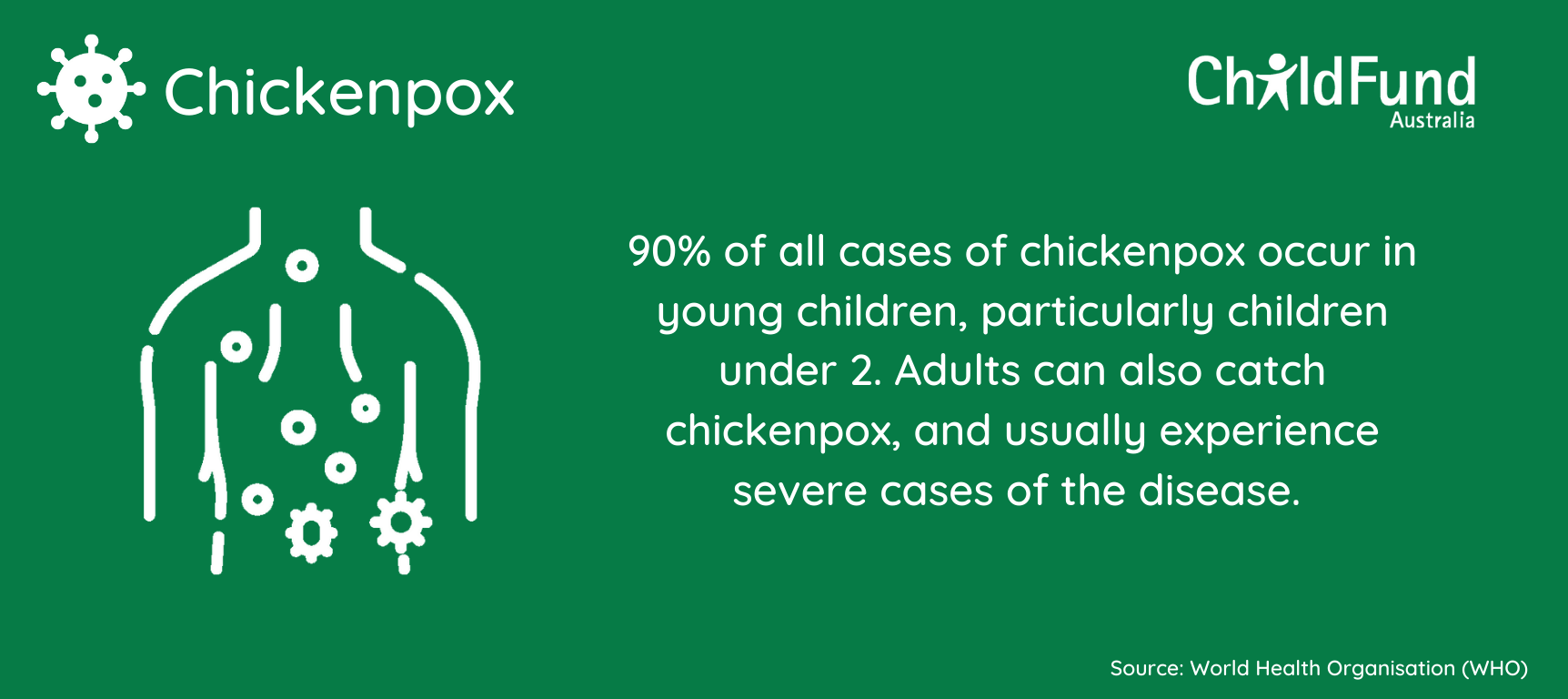
Chickenpox is a short-term disease common in children, who mostly recover easily. It can be more severe in adults. Also known as varicella, chickenpox results in an itchy, blistering skin rash and mild fever.
Symptoms of chickenpox
Symptoms of chickenpox usually appear around two weeks after catching the virus and last between 10 and 21 days.
Symptoms include:
- Itchy red rash
- Blisters
- Fever
- Headache
- Sore throat
How to prevent chickenpox transmission
Chickenpox is spread when an infected person coughs or sneezes, and the virus particles are released into the air. It can also be transmitted through direct contact with an infected person’s chickenpox blisters.
Chickenpox is highly infectious. This disease was a common feature of Australian childhoods prior to 2005 when vaccination was included for the first time in Australia’s National Immunisation Program.
Today, according to the Health Department of Australia, vaccination is the best protection against chickenpox.
Common cold
The common cold is an infection of an individual’s upper respiratory tract; namely your nose and throat.
Symptoms of the common cold
Symptoms of the common cold usually present one to three days after exposure to the virus and can include:
- Cough
- Sore throat
- Runny or stuffy nose
- Mild body aches
- Low fever
- Congestion
- Sneezing
- Mild headache
How to prevent transmission of the common cold
While colds are very minor in the realm of viral diseases, that doesn’t mean they are pleasant. Unlike the flu, the common cold does not have a vaccine to help prevent the spread. Prevention is linked to the same tips as mentioned in Influenza above.
Conjunctivitis
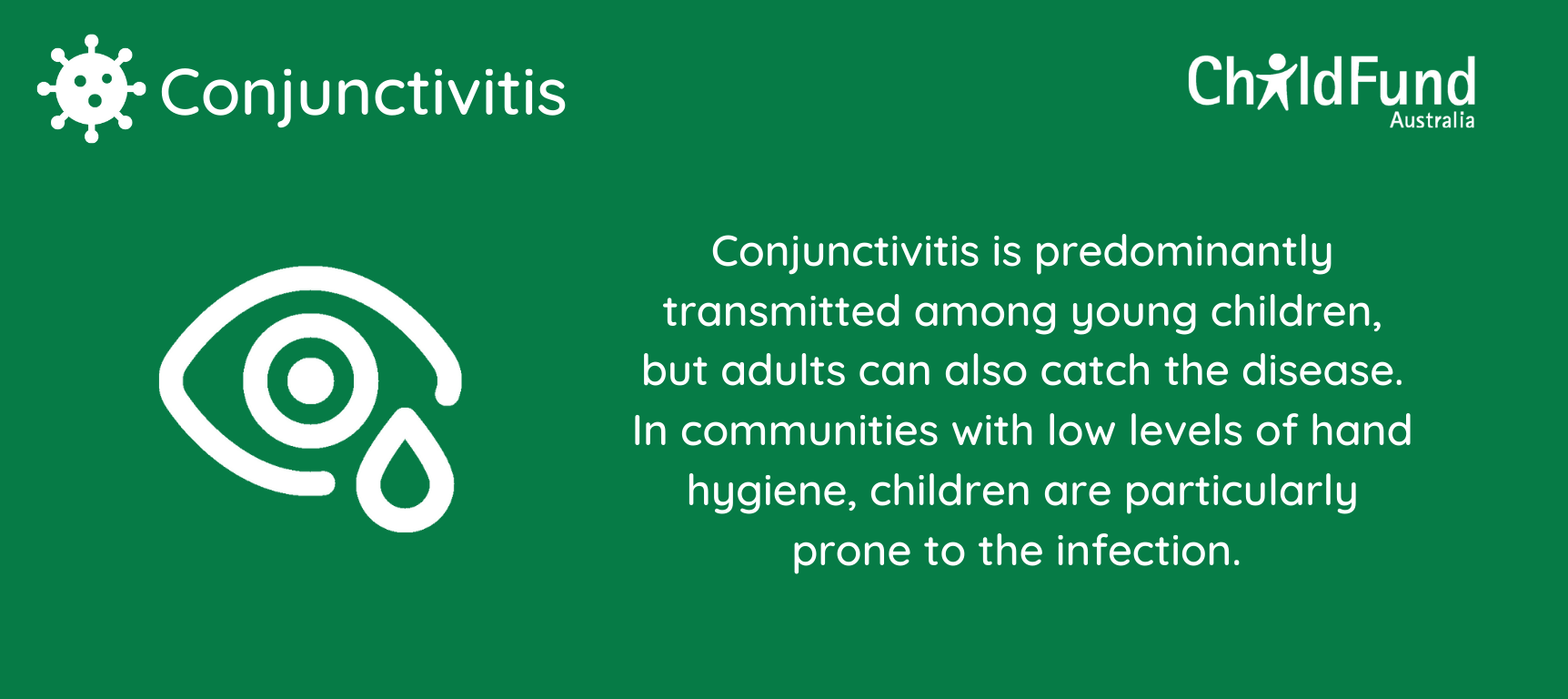
Conjunctivitis, or “pink eye”, is an infection in the outer membrane of your eyeball. Blood vessels found in your conjunctiva, which is a thin membrane lining parts of your eye, become inflamed giving your eye a red or pink colour, hence the name.
Symptoms of conjunctivitis
Conjunctivitis is highly contagious and can be transmitted to others for up to two weeks after symptoms first appear.
Symptoms include:
- A gritty or scratchy feeling in your eyes
- Pink or red-toned eyes
- Itchiness in the eye
- Excessive tears
- Waking to watery or thick discharge build-up
How to prevent transmission of conjunctivitis
Good hygiene is the most effective way to prevent and control the spread of conjunctivitis. This includes:
- Washing your hands often
- Not sharing towels or washcloths
- Not sharing eye cosmetics or personal eye-care items like eye drops.
Malaria
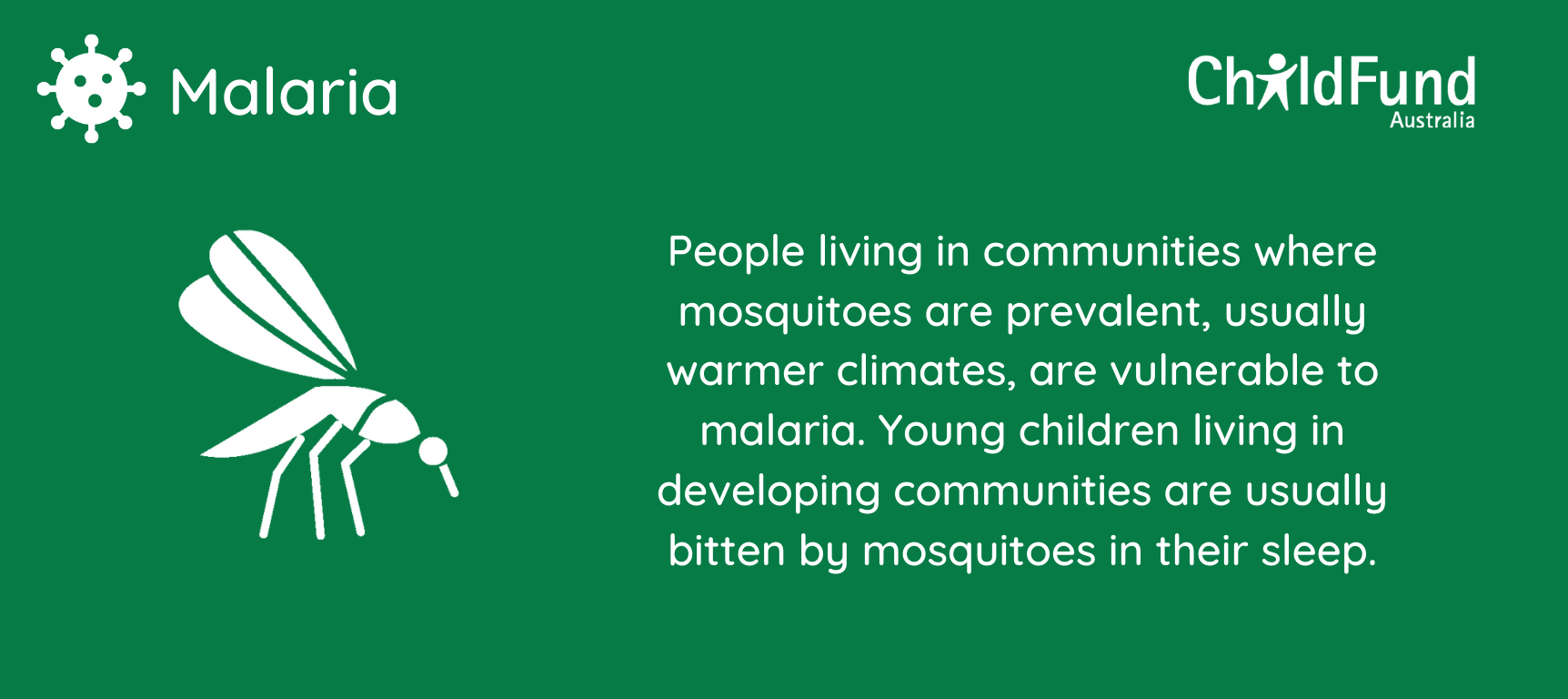
Malaria is a life-threatening disease that is transmitted from person to person through the bites of infected female Anopheles mosquitoes. In 2019 there were an estimated 229 million cases worldwide with 409,000 deaths due to malaria.
Symptoms of malaria
Malaria is an acute febrile illness, which means it is usually defined as a fever that can span up to three weeks and subsides on its own. In non-immune persons, symptoms can present 10-15 days after the infective mosquito bite and include:
- Fever
- Headache
- Chills
These symptoms are mild and are often not recognised as symptoms of malaria. If these symptoms are not resolved within 24 hours, P. falciparum malaria can progress to severe illness, often leading to death.
For children suffering from severe malaria, they can develop one or more of the following additional symptoms:
- Severe anaemia
- Respiratory distress
- Cerebral malaria.
How to prevent transmission of malaria
Whilst antimalarial drugs are available to travellers, no antimalarial drug is 100% effective in preventing malaria.
Extra precautions should be taken to avoid mosquito bites such as being vigilant when outdoors around dawn and dusk, wearing loose-fitting and light-coloured shirts and pants, actively applying mosquito repellent, avoiding perfumes and colognes, and sleeping in a screened and/or air-conditioned room or with a mosquito net.
Tuberculosis
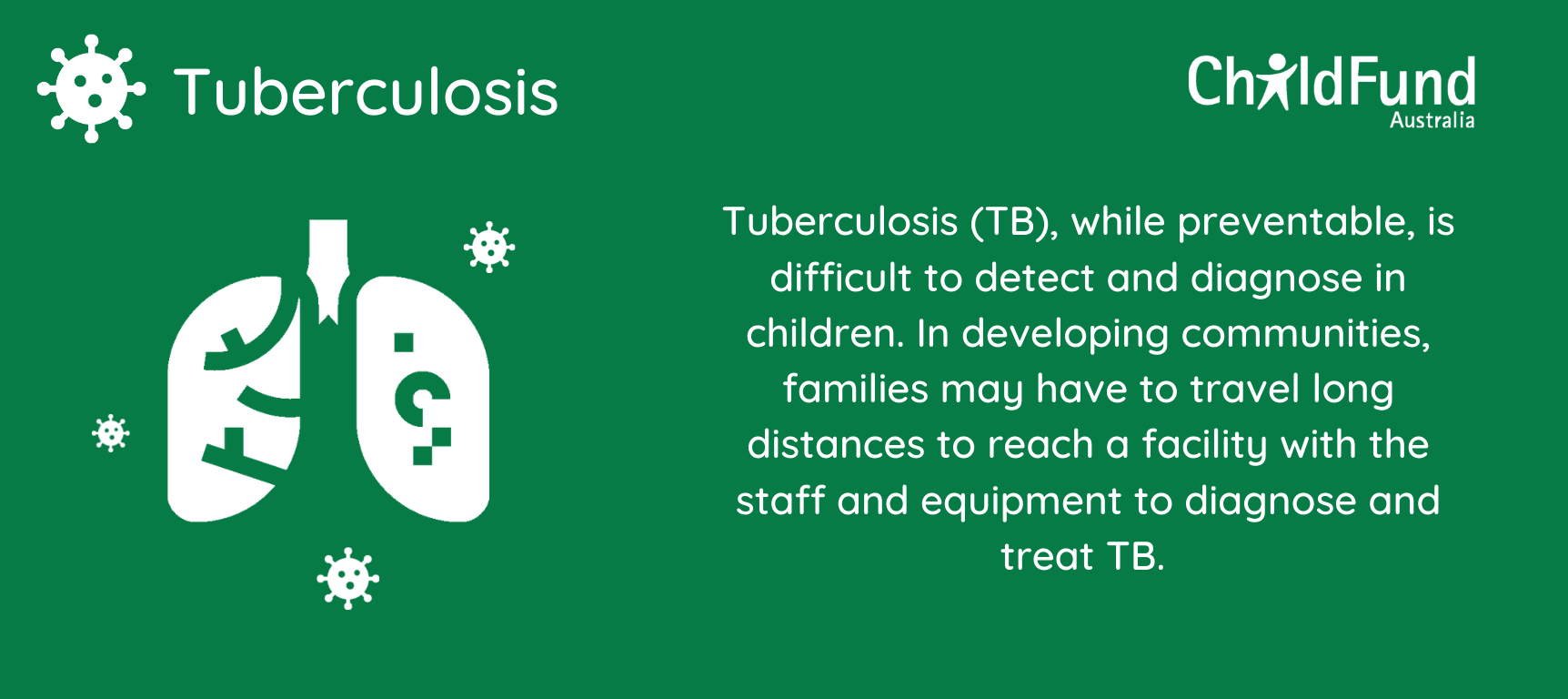
Tuberculosis, or TB, is caused by bacteria (Mycobacterium tuberculosis) and most often affects the lungs. TB can be spread through the air when an infected person coughs, sneezes or spits. A person needs to inhale only a few germs in order to become infected.
Every year 10 million people fall ill with TB. Despite being a preventable and curable disease, 1.5 million die from TB each year, making it the world’s top infectious killer.
TB is also the leading cause of death among those who have HIV as well as a major contributor to antimicrobial resistance.
Symptoms of TB
TB symptoms can include:
- Chest pain
- Prolonged cough
- Weakness and/or fatigue
- Weight loss
- Fever
- Night sweats
How to prevent transmission of TB
Prevention strategies for TB are similar to those we’ve mentioned for Influenza above, however, it is also crucial that people with TB take the full course of treatment to prevent an increase in multi-drug resistant forms of the disease.
Papua New Guinea has one of the highest rates of tuberculosis, which makes children who catch the disease particularly vulnerable. TB can also be difficult to diagnose in children, and small rural health clinics may not have the equipment or human resources to identify and treat the disease. Instead, families may have to travel long distances to access hospital care.
Olive Oa, ChildFund Papua New Guinea’s Head of Health Programs, has personal experience with childhood tuberculosis. Her son, Daniel, caught the disease at 13 years old. He survived because Olive requested an ultrasound scan, showing that Daniel was suffering from abdominal tuberculosis. Being able to have his illness diagnosed, as well as access to the appropriate treatment, was life-saving.
Diarrhoeal disease
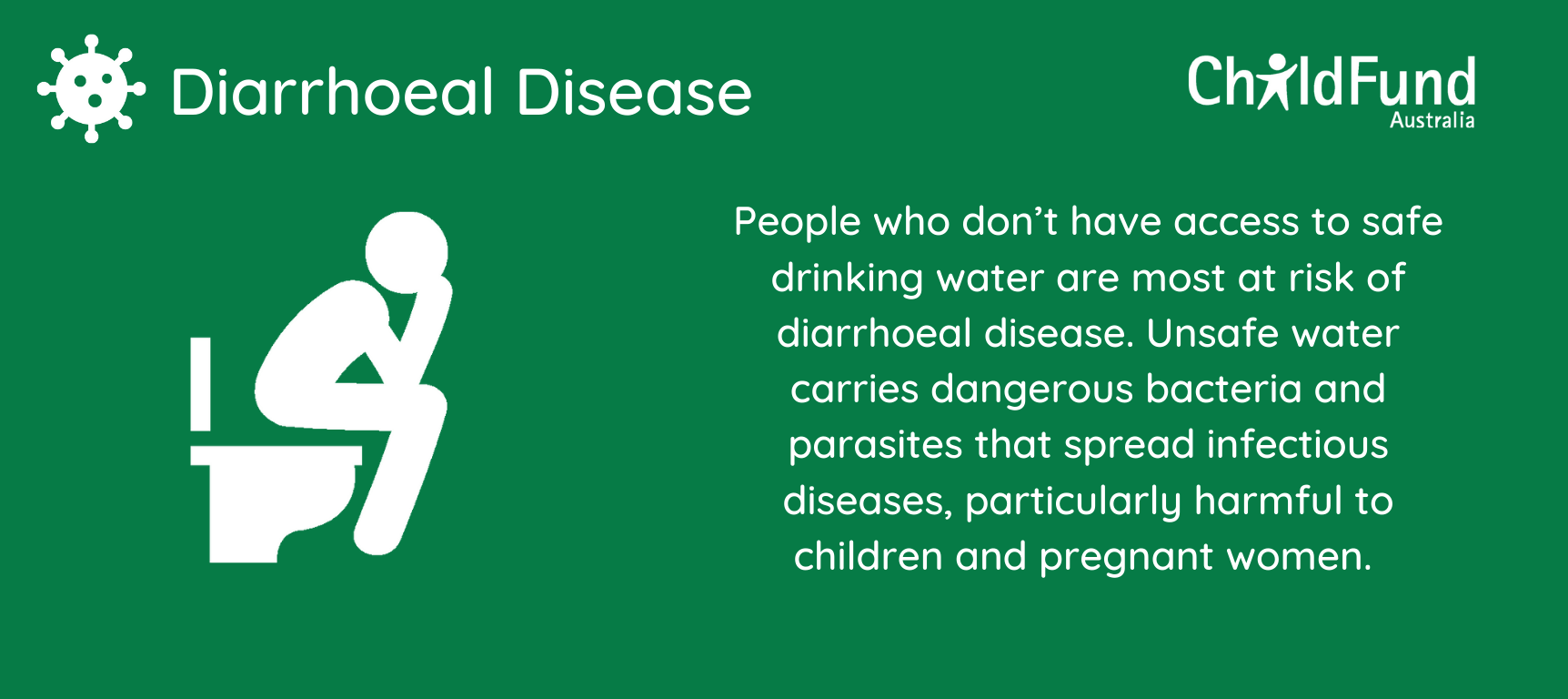
Diarrhoeal disease is the result of an inflammation of the lining of the intestines caused by a virus, bacteria, or parasites and is often linked with diarrhoea and vomiting. Gastroenteritis can be the result of a virus, such as norovirus, bacteria like E. coli or a parasite found in contaminated water.
Diarrhoea is often caused by a bowel infection such as gastroenteritis.
Symptoms of Diarrhoeal disease
The symptoms associated with diarrhoea can include:
- Abdominal cramps and pains
- Vomiting
- The urgency to use the toilet
- Frequent passing of loose or water faeces
- Nausea
How to prevent transmission of diarrhoea
Diarrhoea is often the result of an infection and can be prevented by following the following high standards of hygiene:
- Washing your hands thoroughly. Using soap and water after using the toilet and before preparing food.
- Avoid sharing household items. Another way to prevent the spread of diarrhoea is to avoid sharing items like towels, cutlery and utensils with other members within your home.
- Regular cleaning of the toilet. Including the seat and buttons with disinfectant after each instance of diarrhoea.
Measles
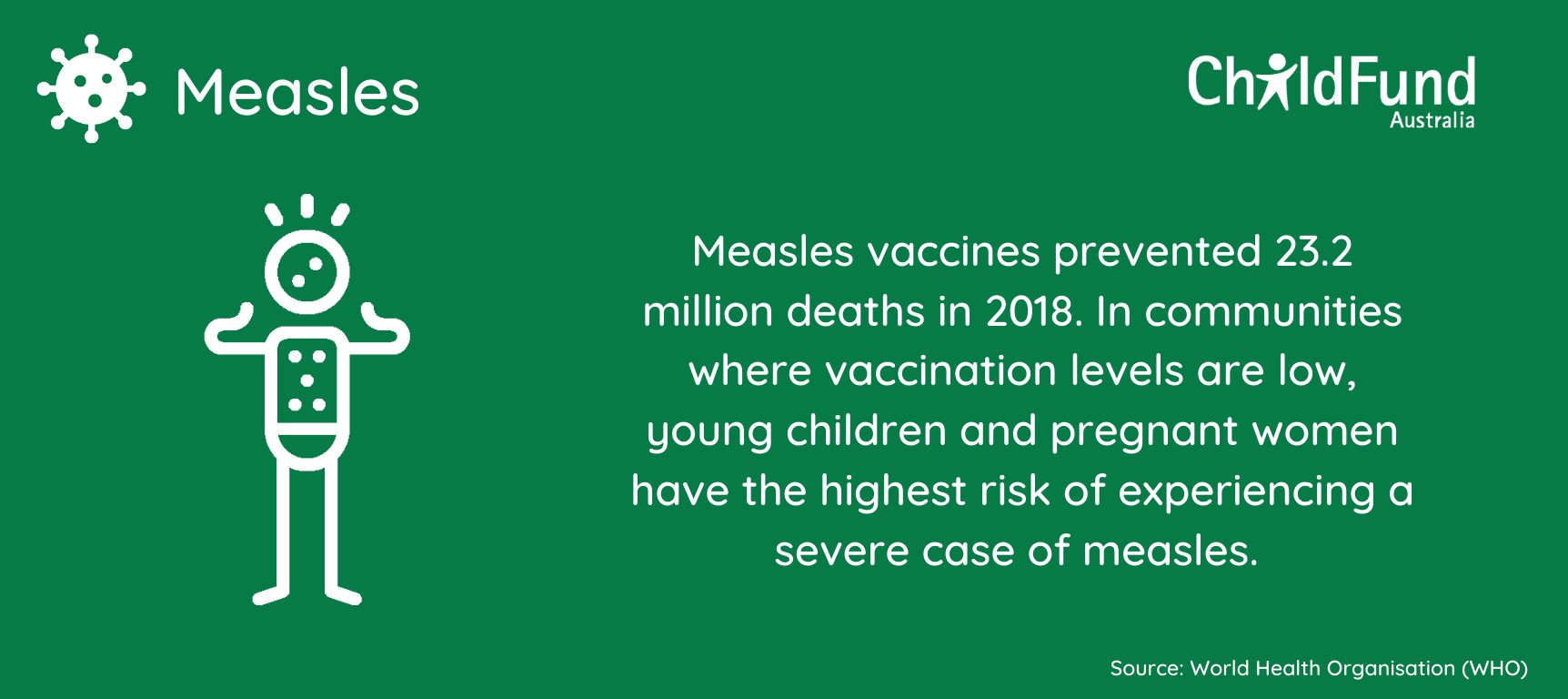
According to the World Health Organisation (WHO), there were more than 140,000 deaths attributable to measles in 2018. Around 86% of the world’s children in 2018 received one dose of the measles vaccine by their first birthday, which WHO equates to the prevention of an estimated 23.2 million deaths.
Symptoms of measles
The symptoms of measles can appear around 10 to 14 days after exposure to the virus and typically include:
- A skin rash made up of large, flat blotches
- Sore throat
- Runny nose
- Tiny white spots on the inner lining of the cheek
- Dry cough
- Fever
How to prevent transmission of measles
According to the Mayo Clinic, doctors usually give infants their first dose of the vaccine between 12 and 15 months, followed by the second dose between the ages of 4 and 6.
If someone with your household has measles, it is crucial that the infected individual is isolated, wherever possible, as the disease is highly contagious. It is also important to vaccinate anyone who has yet to receive both doses.
How can you help reduce the spread of infectious disease around the world?
ChildFund works with vulnerable communities to help reduce and prevent the spread of infectious disease. What may be common viruses in developed countries can be life-threatening for children in the world’s poorest places.
You can help by donating to current appeals or by sponsoring a child in a developing community to help ensure that they have opportunities for a healthy future.































